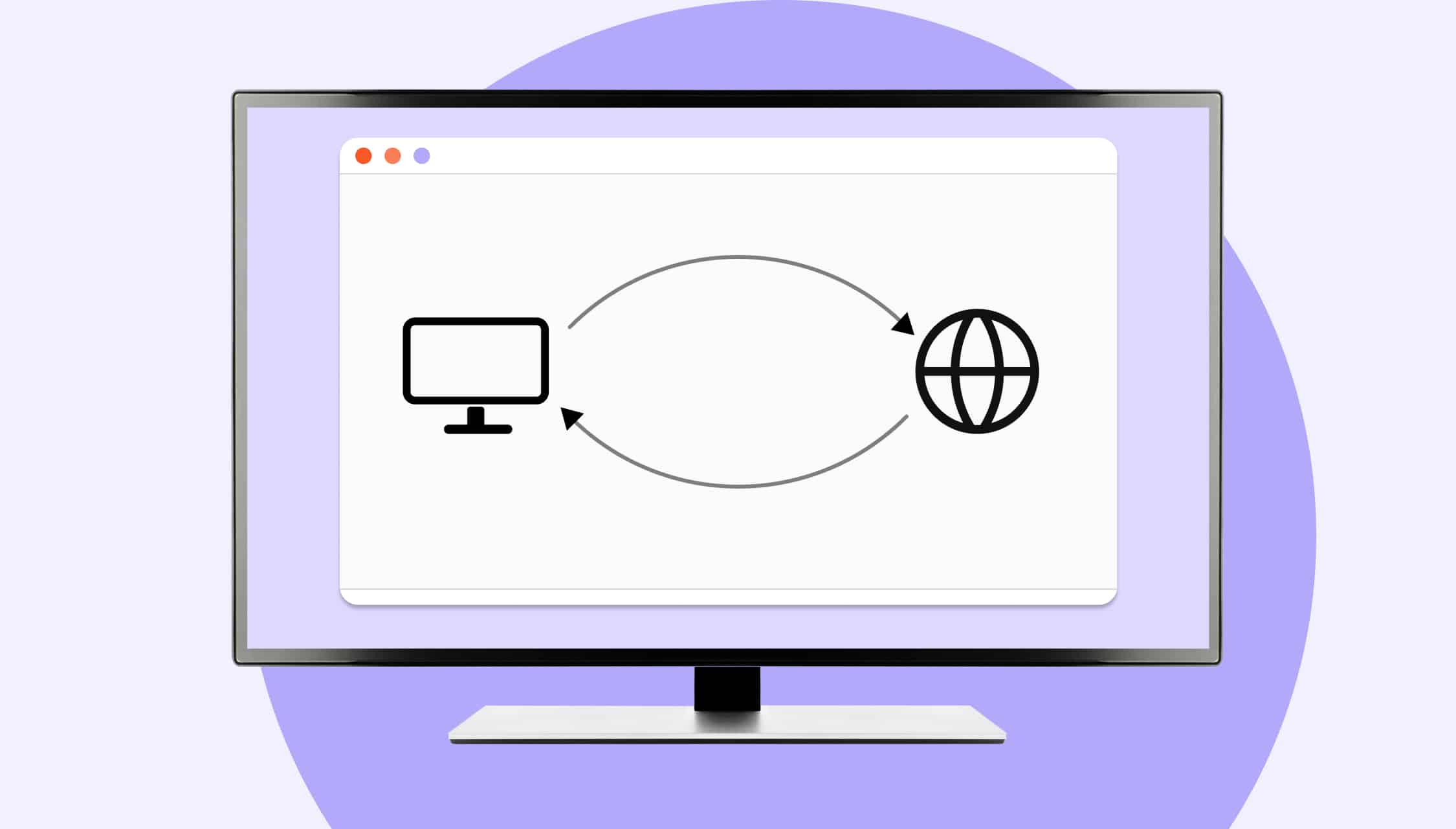
SOA records | DNS

From resolution to reliability: Discover how SOA records orchestrate the seamless operation of the internet’s naming system.
Published by

Simone Catania
Date
The Domain Name System (DNS) stands as the backbone of the internet, transforming human-readable domain names into IP addresses that computers use to communicate. At the heart of DNS functionality lie DNS records, critical elements that dictate how domain names are resolved and how internet traffic is directed.
Among these, the SOA record is paramount, serving as the foundation for a domain’s DNS zone with its comprehensive coverage of essential settings and metadata. Given its central role, understanding and configuring Start of Authority records is essential for ensuring the robustness, reliability and efficiency of DNS operations.
Whether you want to refine your expertise or solve specific challenges related to DNS record management, continue reading to uncover the critical aspects of SOA records and how they underpin the DNS infrastructure.
What are SOA records?
The Start of Authority (SOA) record emerges as the blueprint for a domain’s DNS zone. It is the first record within a DNS zone file, serving as a declaration of authority and control for the specified zone. The SOA record is not just a signpost; it is the authoritative source providing essential details about the zone’s configuration and overall internet behavior.
The SOA record, introduced in 1987 via RFC 1034 and RFC 1035, was a foundational element in establishing the DNS, marking a significant development in how DNS zones and their authoritative information were managed. Subsequent updates and clarifications and the detailed definition in RFC 8499, underscore the SOA record’s critical role in maintaining the DNS’s stability and reliability over the years.
Essential for both DNS resolution and administration, the SOA record establishes the groundwork for how updates and changes are propagated, effectively dictating the reliability of the domain’s resolution process.
What makes up SOA records?
A properly configured SOA record encompasses several key elements
- Primary DNS server: This is the authoritative name server for the domain, indicating where to find the definitive versions of the DNS zone records.
- Admin’s contact: An administrative email for the person responsible for the zone. Typically, it’s the email address of the domain’s DNS administrator.
- Serial number: A sequence number signifying the version of the zone file. Incremented with each update, it ensures that secondary servers can detect and apply changes.
- Refresh rate: The interval before secondary servers should check for updates to the zone from the primary server.
- Retry rate: The retry interval defines how long a secondary server should wait to retry a failed zone transfer from the primary server.
- Expiry limit: Should communication with the primary server fail, this value defines when a zone’s data is considered outdated and stops being authoritative.
- Minimum TTL: The minimum time-to-live value suggests how long DNS resolvers should cache the zone’s data before refreshment is required.
4 important roles of SOA records in DNS management
SOA records are important within DNS management for numerous reasons. They act as a foundational record that asserts control and sets the stage for how a domain’s DNS information is promulgated and maintained across diverse networks and systems.
-> Hierarchical and administrative control
At the core of its utility, an SOA record establishes hierarchical and administrative control over the DNS zone. This authority delineates the boundaries for operational management and ensures a reliable source of truth for the zone’s configuration. Detailing which server is the primary DNS server provides a clear route for the propagation of DNS information, steering the update process from a single authoritative point. This hierarchical structure is vital in maintaining the integrity and consistency of the DNS information as it flows through the internet’s complex ecosystems.
-> Ensuring data consistency and reliability
Data consistency and the reliability of DNS information are paramount in the domain name resolution process. The sequential nature of the serial number within the SOA record plays a crucial role in marking the version of the DNS zone file. Each time an update is made — adding a new record or modifying existing data — the serial number increments, signaling secondary DNS servers that a fresh copy of the DNS zone file is available. This mechanism ensures that changes are systematically recognized and applied, preserving data consistency across all servers that hold a copy of the zone file.
-> Timing and propagation control
The timing parameters within an SOA record — including the refresh rate, retry rate and expiry limit — offer domain administrators granular control over how DNS information is disseminated. These intervals determine how often secondary servers check for updates, how they respond to failures in data retrieval and when the data is deemed too old to be reliable. In essence, these controls can be fine-tuned to balance the load on the primary server while optimizing the responsiveness and resilience of the domain’s DNS structure.
-> Global DNS performance and caching
Lastly, the minimum TTL specified in the SOA record has widespread implications on how DNS resolvers across the globe cache and refresh the zone’s information. A well set minimum TTL can enhance the performance of web services by reducing the DNS lookup times and decreasing the load on authoritative servers. This optimization of DNS cache policies is a critical aspect of global DNS performance, affecting user experience and resource utilization.
These parameters define the operational blueprint for a DNS zone and ensure that the zone’s presence on the internet is marked by reliability, consistency and efficiency. The SOA record, in essence, orchestrates the symphony of data exchange that enables the internet’s domain name system to function seamlessly.
Challenges in SOA record management
- Accuracy of DNS data: Ensuring the accuracy of the data within SOA records is paramount. Incorrect configurations can lead to problems in DNS resolution, affecting the accessibility of the associated services. This includes errors in the primary DNS server designation, incorrect timing settings and mismanaged serial number increments.
- Propagation delays: Changes to SOA records do not propagate instantaneously across the internet. This delay can cause inconsistency in DNS information, potentially resulting in downtime or degraded performance. Managing the timing parameters correctly is crucial to mitigating these issues.
- Load and traffic management: Incorrectly configured refresh and retry intervals can lead to unnecessary loads on the primary server, affecting its performance. Moreover, setting an inappropriate TTL can impact the caching behavior of DNS resolvers, either causing excessive DNS lookups or, conversely, serving stale data to users.
- Security concerns: The SOA record, being the root of a domain’s DNS architecture, is a critical point of security. It must be protected against unauthorized access and modifications, which could have wide-ranging implications for the domain and its associated services.
Best practices for SOA record management
- Regular audits: Perform audits of SOA and other DNS records to verify their accuracy and consistency. Look for anomalies or discrepancies that could signal problems or potential improvements in the configuration.
- Incremental serial number management: Adopt a clear and consistent policy for incrementing the serial number in the SOA record. This practice is crucial for informing secondary servers about updates efficiently and preventing synchronization issues.
- Optimized timing parameters: Tune the refresh, retry, expiry and minimum TTL settings based on the specific requirements and traffic patterns of your domain. This optimization should balance the quick propagation of changes with minimizing unnecessary load on the DNS infrastructure.
- Change management procedures: Implement robust change management procedures for DNS updates. This includes documenting all changes, conducting pre- and post-change reviews and utilizing staging environments for testing.
- Security measures: Enhance the security posture of your DNS setup by implementing DNSSEC, access controls and monitoring for unauthorized changes to the SOA and other DNS records.
Evolving practices and policies in DNS management
As technology evolves, so do the practices around managing domains. We are seeing a trend towards automation in updating and maintaining DNS records and SOA records to decrease the potential for human error and increase efficiency. Tools that utilize AI to predict and apply optimal TTL settings or adjust retry and refresh intervals based on real-time analytics are becoming more prevalent. These advancements promise to enhance the stability and responsiveness of DNS systems significantly.
At the same time, internet governance is continually evolving, influenced by policy changes. These shifts can significantly impact SOA record settings and overall DNS management practices. For instance, new policies like the NIS2 Directive might mandate stricter security measures, impacting how records are maintained or validated. Additionally, international regulations might influence data handling procedures, necessitating adjustments in SOA records to comply with data sovereignty laws.
DNS records at your service
By staying informed and prepared, DNS administrators can ensure that their domains and networks are resilient and compliant. If you have questions or need guidance on managing your domains or DNS records, our Partner Success Managers are ready to assist. Contact us today for expert support tailored to your specific needs.








